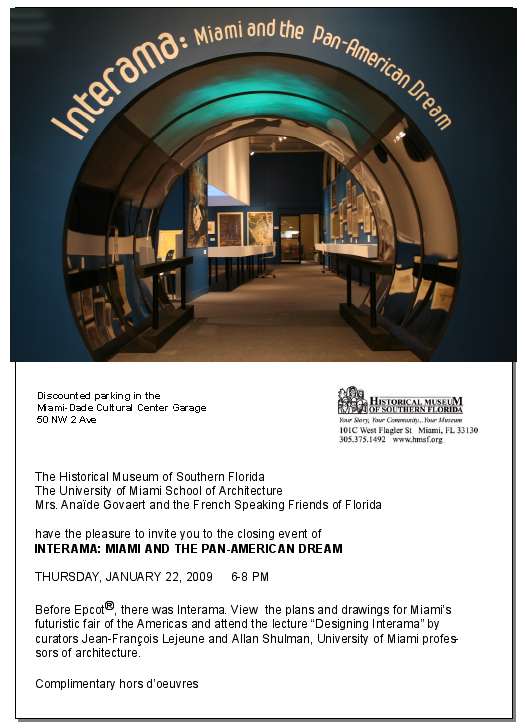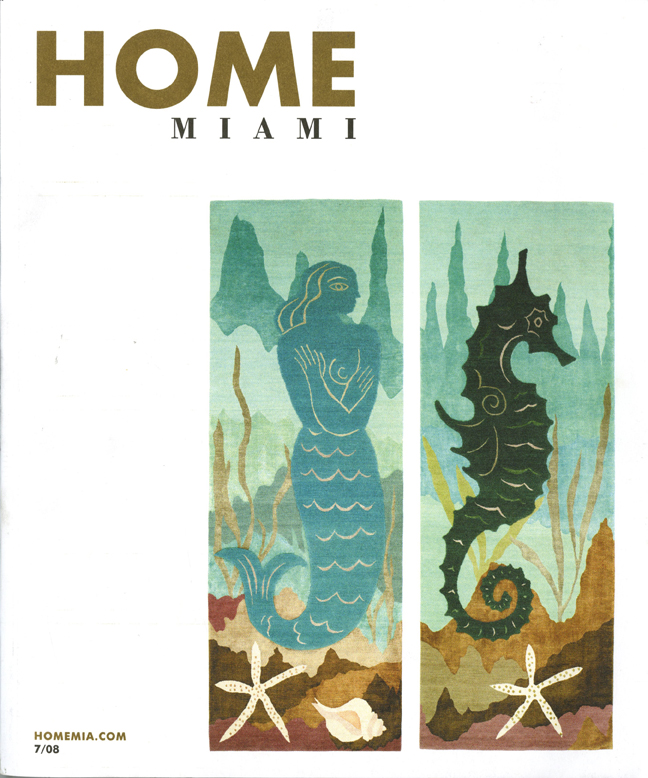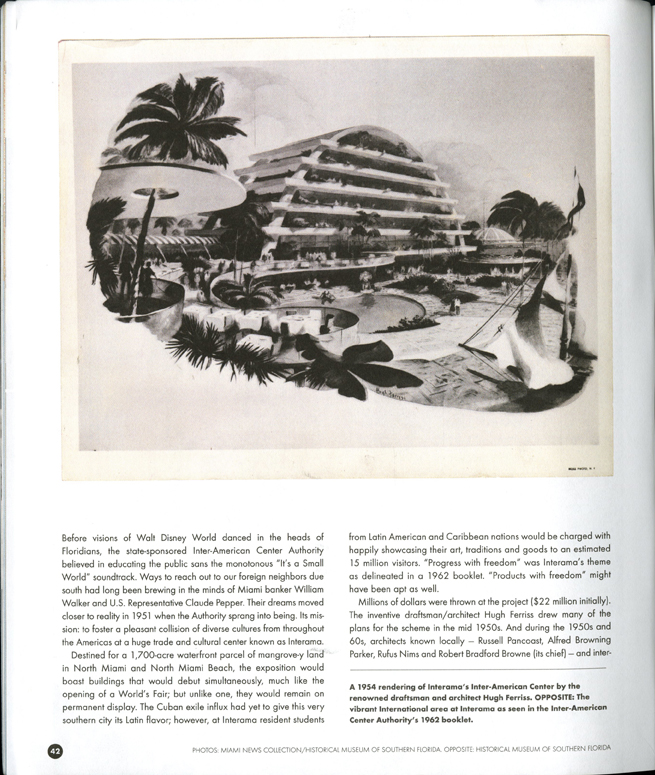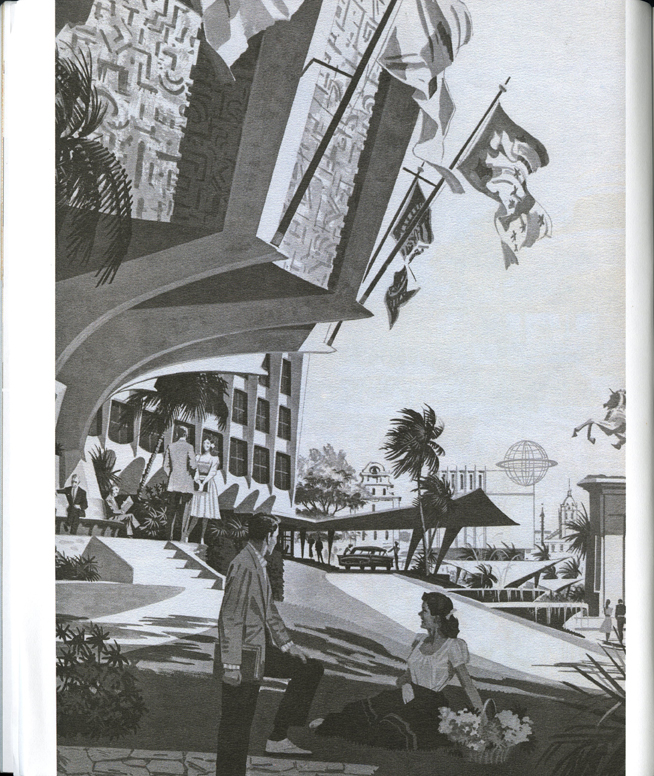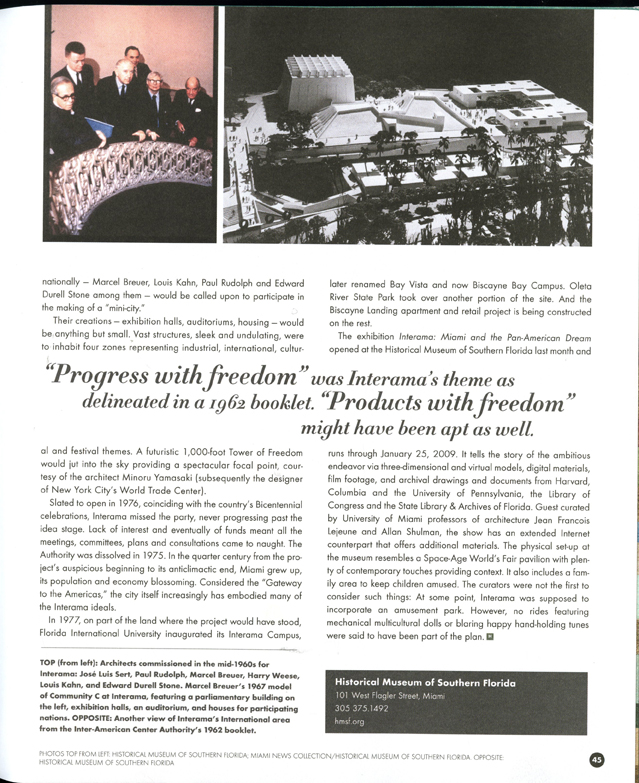Interama: Miami and the Pan-American Dream
Historical Museum of Southern Florida, Florida | 2009
Miami has routinely envisioned and promoted itself as a crossroads of the Americas. In 1951 this vision found an institutional home with the establishment of the Inter-American Center Authority, chartered by the State of Florida. The authority’s objective was to build on the north side of Miami a large-scale, permanent trade and cultural center called “Interama,” which would attract participants and visitors from throughout the Americas
The Interama project peaked during the mid-1960s, when the Authority recruited seven world-renowned architects—Marcel Breuer, Louis Kahn, Edward Durrell Stone, José Luis Sert, Paul Rudolph, Harry Weese, and Minoru Yamasaki—to design a complex of buildings and outdoor spaces that would represent the idea of pan-American cooperation. Across this “mini-city” would be room for every participating country to present its products and artistic traditions.
Planning continued into the early 1970s, but the center was never built. Today, Florida International University’s Biscayne Campus and the Oleta River State Park are located on the site where Interama was imagined. Interama: Miami and the Pan-American Dream offers both a review of the idea and design of Interama during a pivotal period in our city’s history and an opportunity to reflect on how the city’s hemispheric ties have influenced its development.
Curators: Allan Shulman, Jean-Francois Lejeune
© 2025 Shulman + Associates

